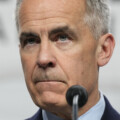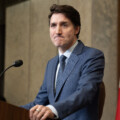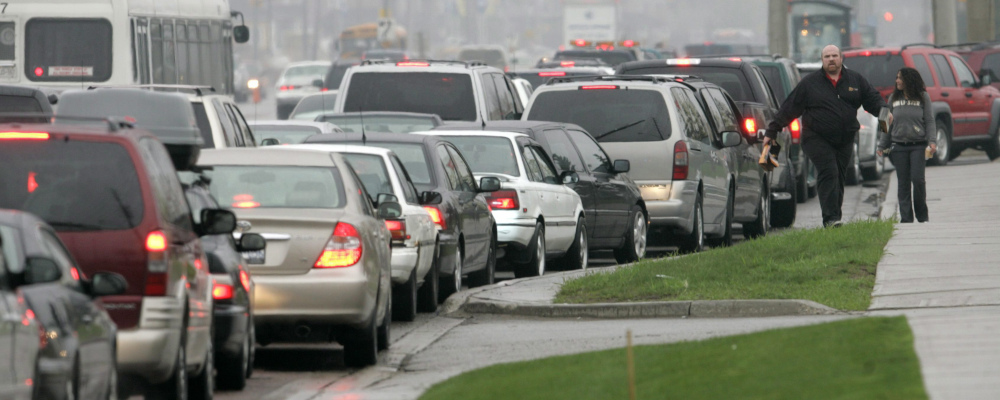The Hub launched with a core mission of getting Canadians thinking about the future. We’ve been stuck in the doldrums, pessimistic and polarized, for too long. To lay out a roadmap for the next 30 years of Canadian life, we asked our contributors to pinpoint the most consequential issue, idea or technology for the country in 2050. This series of essays by leading thinkers will illuminate Canada’s next frontier.
I generally vote Conservative. Over the past few years, however, I’ve been finding it harder and harder to muster the motivation to vote at all.
I’m sure this has a bit to do with the fact that I live in a Toronto riding that is very orange and occasionally red, and not likely to turn blue anytime soon. It also has to do with the lack of vision emanating from the Conservative Party.
My blue-Liberal friends tell me that the CPC doesn’t seem to have a reason to exist. It’s not clear to them what the CPC would like Canada to look like in the near or long-term, or what specific problems it would like to solve that are not currently being solved, other than maybe balanced budgets.
I can’t say that I disagree.
At best, the CPC appears to be the party that restores some degree of fiscal and regulatory sanity just in time for the Liberal Party of Canada to take back over and start introducing a lot of new spending and a bunch of new rules.
Following the financial crisis of 2008, Prime Minister Stephen Harper paid a lot of attention to our annual budget deficits and the country’s debt-to-GDP ratio, and made it a priority to rein both in. During his last year in office, the finance department posted a $1.9-billion surplus.
This gave incoming Prime Minister Justin Trudeau a lot of latitude for introducing new spending programs.
“Our debt-to-GDP ratio is the lowest in the G7,” said Finance Minister Bill Morneau in 2016, as he unveiled a budget forecasting an $18-billion deficit, well above the $2-billion that was promised.
The CPC might then just be the party that hits “reset” every few years. That’s not terrible, it’s probably needed, but it’s not very exciting.
I’d like to see it try something different. I’d like to see the Conservative Party, or any party for that matter, put forth a clear and optimistic vision for the future, along with a positive plan for how to achieve it. The best part about this agenda is every party could find something it likes. The outcome therefore could be a multi-partisan consensus in favour of more growth.
But if the Liberal Party is going to be the party of redistribution and equity, the Conservative Party should be the party of production and growth.
Here’s a motivating question to get our politicians and policymakers thinking in the right direction: what would it take for Canada to achieve a $200,000 per capita GDP by 2050?
Getting to $200,000 from our current level of about $48,000 is no easy task. That’s a 5 percent compounding growth rate from now until then, and certainly a future that people could get excited about (if framed in less wonky terms, maybe with some illustrations and renderings imagining a bright and prosperous near-future).
The short answer is that it would take a lot. Developed countries have long since settled for growth rates of 2 to 3 percent. (Canada has averaged less than 2 percent-growth per year since the start of this century.) Boosting that number to 5 percent would put us on par with some developing nations that are starting from a much lower base.
That said, let me put forward three ideas that I think would put the country on a pro-growth path, ordered by implementation difficulty.
First, more immigration. To grow our economy, we need more ideas, as ideas generate innovation and entrepreneurship, which in turn generate productivity growth and, ultimately, economic growth.
And ideas, of course, come from people. More people means more ideas. This might sound a bit simplistic but it’s rooted in some important economic work. New York University professor and former chief economist of the World Bank Paul Romer won a Nobel Prize in 2018 for his early scholarly exploration of this logic.
Let’s let more people in.
Second, more housing. These immigrants are going to need a place to live, as are those Canadian residents who are already having a hard time making ends meet on the housing front.
I’ve written a bit about housing in the past, including on a specific approach the federal government could take to nudge or force municipalities to allow for more housing development. The short version is that it should require municipal land use rule reform generally and upzoning specifically as a requirement for federal funding of major infrastructure projects.
Allowing for more housing in and around our big cities would also allow more people to live in these high-productivity, low-unemployment regions, and that’s great for economic growth.
Let’s allow for more housing.
Third, improved state capacity. This is the trickiest one of the three as it requires more than a few minor legislative changes.
State capacity is defined as the government’s ability to get things done. Over the past five or six decades, our governments have gotten much worse at getting things done. Government-lead digital and physical projects are routinely, and expectedly, delivered late and over budget.
Just think about the Phoenix pay system, a payroll processing system for federal government employees. It was first introduced in 2009 and was expected to be online by 2015 at a total cost of $310-million.
Twelve years later, following problem after problem with its development and rollout, we’re looking at a total cost of $2.2-billion and a complete replacement that will not be ready before 2023 at the earliest.
If we could let more people into our country I think they could do a lot of the actual problem solving.
Our diminishing state capacity is not just an issue because we spend more money for infrastructure than we otherwise would, but also because those extra dollars and that extra time comes at the cost of other projects we could have gotten completed. The benefits of those projects are therefore never realized.
We spend too much money and time on subway construction, for example, so we get less subway infrastructure than we otherwise would, and more people spend more time in traffic, which is of course a big waste of time (and bad for the environment).
We’re not going to achieve a $200,000 per capita GDP by 2050 sitting in traffic, or by navigating government websites and digital services that haven’t been meaningfully updated in a decade or longer.
We’re doing less with more. We need to do more with less, which is how things generally work in the private sector.
The discerning reader will note that none of these three proposals would directly contribute to innovation and growth. That’s by design. These are metasolutions to the problem of too low per capita GDP.
If we could let more people into our country, including really smart people, let them cluster in dense agglomerations, which contribute to the vibrant exchange of ideas, and streamline our government services and physical infrastructure to support them, I think they could in turn do a lot of the actual problem solving.
Any political party could advance the conditions for growth, and then take credit for the growth that results. The CPC could do it without getting too distracted by the sort of high-risk, high-cost industrial policy that runs contrary to its ethos.
Critically, despite all the space devoted to these three proposals above, our politicians shouldn’t actually spend too much time talking about their new pro-growth platform. They should pitch the vision of a bright and prosperous future, over and over again, and use the platform as a supporting credibility piece.
Originating from the right leader, as politics is still very much a charisma game, I think that this would be a very exciting vision and pitch. It might even help win a few elections.
More importantly, it would make those victories matter all the more for the country.
Recommended for You

Laura David: Red pill, blue pill: Google has made its opening salvo in the AI-news war. What’s Canadian media’s next move?

The Notebook by Theo Argitis: Mark Carney’s first major tests

The Weekly Wrap: Trudeau left Canada in terrible fiscal shape—and now Carney’s on clean-up duty

Ben Woodfinden: Lament for an ‘elbows up’ nation




